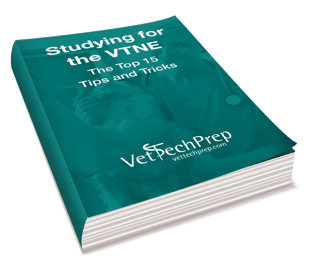
Overall, the veterinary clinic seems like a pretty safe place to work. Sometimes it is important to stop and think about the hazards we may encounter in our jobs and take the steps to minimize the risks of injury.
Here are a few hazards to consider:
Animal Bites and Scratches
This comes with the territory and we all have scars to prove it! Think about how you can minimize your risk. Minimize stress for patients (check out tips from Dr. Becker's Fear Free movement), use proper restraint when needed, and if a bite or scratch occurs, make sure to wash the wound well and see your doctor. Sometimes bites can cause very serious infections and they should be treated seriously. Be sure to watch Angry Cat At The Vet featuring Megan Brashear, a vet tech specialist from atdove.org.
Spilling of Chemicals
Be very careful and wear gloves when handling chemotherapeutic agents. Make sure to know your clinic's protocol for cleaning up any spills of chemotherapy drugs or anesthetic gases, etc. in the event this should happen.
Needle Sticks
Even though it isn't as big of a risk as it is in human medicine, needle sticks can still lead to infections, and they hurt! Don't re-cap needles.Place your needles in proper sharps containers.
X-ray Exposure
Know: ALARA (As low as reasonably achievable). Minimize your exposure, wear proper gear of a lead apron, gloves, and thyroid protector. If you don't need to be in the x-ray room, then don't!
Fire emergency
Know protocol for your hospital in the event of a fire regarding making sure animals get out safely and always evacuate the nearest exit.
Infectious Disease
Zoonosis can and does occur. There have been several headlines in the news recently about rabies exposures. Animals can have diseases that transmit to us. Wash hands well, wear protective clothing if infectious disease is suspected, and notify the veterinarian in charge if you are concerned about a possible zoonotic disease. Don't eat your sandwich near the fecal specimens...you get the point. Zoonotic Disease Prevention in Veterinary Personnel
Back injury
We lift heavy things. Heavy dogs, heavy bags of food, etc. If something is over 30 to 40 pounds, you really should get a colleague to help you lift.
For other ways to stay safe, Veterinary Hospital Safety is a must read!
Can you think of any other hazards that should be on this list? Let us know in the comment section below!
The Top 15 Tips and Tricks for Studying for the VTNE
 You're of course going to need to study a ton to nail the test, but there are a lot of tips and tricks that will help you make the most of your study time and we've packaged those up in a free guide. You're of course going to need to study a ton to nail the test, but there are a lot of tips and tricks that will help you make the most of your study time and we've packaged those up in a free guide.
Some of the Top 15 Tips include:
- Familiarize Yourself with the Test Format
- Tackle the Weak Subjects Early
- Start Sooner and Ease Into It
- ...and 12 more!
 |



 You're of course going to need to study a ton to nail the test, but there are a lot of tips and tricks that will help you make the most of your study time and we've packaged those up in a
You're of course going to need to study a ton to nail the test, but there are a lot of tips and tricks that will help you make the most of your study time and we've packaged those up in a 